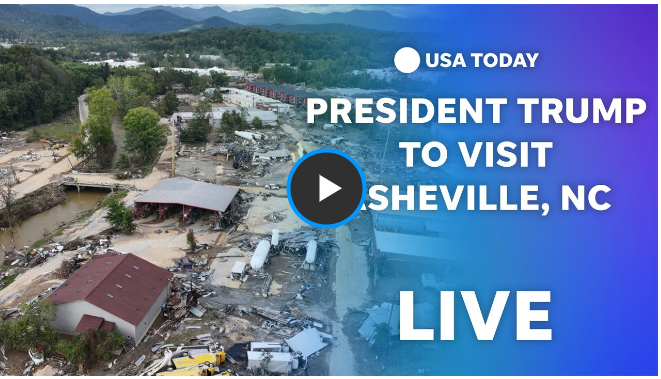- Business
- Flavors and E-Liquids
- Health and Safety
- Top Vape Brands
- Vape Deals and Discounts
- Vape Reviews
- Vaping
- Vaping Culture
- Vaping Guides
- Vaping News and Trends
Trump stops in Asheville, NC, to tour storm damage; Deportation flights begin

In a week marked by storms and political discourse, former President Donald Trump made a notable stop in Asheville, North Carolina. The visit was twofold—surveying the damage iron mike tyson vape inflicted by severe weather and addressing the resumption of deportation flights. This convergence of natural disaster and political policy offers a stark reminder of the complexities facing communities in crisis.
Trump’s Asheville Visit: A Ground-Level Perspective
Trump’s visit to Asheville was a calculated move to highlight leadership amidst adversity. Arriving with his entourage, he toured the hardest-hit areas, engaging directly with residents and emergency responders. The former president emphasized the importance of swift federal support while also underscoring local resilience. Asheville’s mayor and several state officials joined Trump, blending bipartisan collaboration with moments of political friction.
The crowd’s reception was a mosaic of admiration and skepticism. Supporters praised Trump’s hands-on approach, while detractors questioned the timing of his immigration policy announcements amidst a disaster recovery effort.
Assessing the Storm Damage
The storm wreaked havoc across Asheville, leaving a trail of destruction that ranged from uprooted trees to flood-ravaged homes. Critical infrastructure, including bridges and power lines, bore the brunt of nature’s fury. Local businesses, many already reeling from economic challenges, faced further setbacks.
For residents, the storm was not just an environmental event but a personal tragedy. Families were displaced, possessions were lost, and the road to recovery appeared daunting. Trump’s visit brought attention to these struggles, though the question of long-term solutions loomed large.
Federal Response to Natural Disasters
Federal disaster relief has historically been a cornerstone of post-crisis recovery. Trump highlighted programs such as FEMA assistance and low-interest loans for rebuilding efforts. He assured residents that federal resources would be deployed efficiently, though critics remained cautious, citing bureaucratic delays in previous disasters.
The intersection of federal promises and local needs underscored the broader challenge: balancing urgency with accountability. Asheville residents hoped this visit would translate into action, not just words.
Deportation Flights: A Controversial Resumption
Simultaneously, the reinstatement of deportation flights added a layer of complexity to Trump’s visit. These flights, paused during the pandemic, resumed amid significant backlash. Proponents argued the move was a necessary enforcement of immigration laws, while opponents decried it as inhumane and ill-timed.
The policy has sparked debates beyond Asheville, drawing attention to its implications for immigrant families and labor markets. Critics questioned the optics of announcing such measures during a disaster tour, suggesting it detracted from the focus on storm recovery.
Connecting the Dots: Immigration Policy and Disaster Recovery
Immigration policy has a direct, albeit often overlooked, impact on disaster recovery. Asheville’s rebuilding efforts rely heavily on labor, much of which comes from immigrant workers. The resumption of deportation flights threatens to deplete this workforce, exacerbating recovery challenges.
Trump’s stance on immigration, though consistent with his previous policies, raised concerns among local contractors and community leaders. They warned of potential delays in reconstruction and economic stagnation, emphasizing the need for a nuanced approach.
Local Voices: Perspectives from Asheville Residents
Residents of Asheville offered diverse perspectives on Trump’s visit. For some, his presence signaled hope and a commitment to rebuilding. “It’s good to see leadership on the ground,” one resident remarked.
Others, however, voiced frustration. A storm survivor noted, “We need immediate help, not political posturing.” The deportation flights, in particular, Tyson 2.0 legend 30K drew ire from immigrant families, who felt targeted during an already vulnerable time. These voices reflect the multifaceted emotions coursing through a community in recovery.
Conclusion
Trump’s stop in Asheville shone a spotlight on two critical issues: the urgent need for disaster recovery and the contentious debate over immigration policy. While his visit brought attention to the challenges at hand, it also underscored the complexities of addressing multiple crises simultaneously.
For Asheville and the nation, these dual challenges serve as a reminder of the resilience required to weather storms—both natural and political. The path forward demands not only resources but also empathy, unity, and a commitment to addressing the needs of all affected communities.



